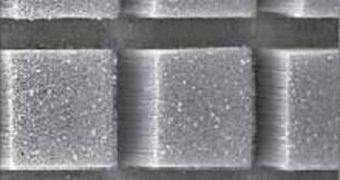Engineers working on rocket propulsion systems realized a few decades ago that chemical reactions would at one point reach a stage in which advancement would do little to increase a delivery system's overall thrust. They began working on new system, which they believed could one day successfully replace oxygen- and hydrogen-based engines. Ion thrusters only equipped a small number of spacecraft over the past 50 years, but the space probes did alright. Now, experts are looking at using nanotubes as one of the main components in a new generation of ion thrusters, Technology Review reports.
The research group, based at the Georgia Institute of Technology (Georgia Tech), says that its researchers managed to develop a new method of producing all of the electrons required for an ion engine to work. Inside conventional ion thrusters, this process takes up to 10 percent of the spacecraft's xenon gas propellant. In “Hall Effect” thrusters, one of the most common types, electrons trapped in magnetic fields are used to ionize gas. Ions result, and they are then accelerated using an electric field maintained between an anode and a cathode.
In the same type of engine, a part of the electrons need to be used to annihilate the ions that escape in the spacecraft's emissions plume, so as to ensure that the space explorer does not become electrically charged. What the Georgia Tech team did was basically construct a carbon nanotube-based field emission cathode for a different type of ion thruster. The researchers used the fact that nanotubes tend to be very strong and electrically conductive. Electrons are created after they tunnel through a potential barrier – this phenomenon is known as quantum tunneling.
“By using carbon nanotubes, we can get all the electrons we need without using any propellant,” explains Georgia Tech High-Power Electric Propulsion Laboratory assistant professor Mitchell Walker, who is also the principal investigator of the new project. A direct consequence stemming from this improvement is the fact that all ships built with the new technology could in the near future endure up to 10 percent more in space than they do at this point, as the fuel used to annihilate ions could now be used for propulsion alone. Walker presented a paper on the new system earlier this year, at the Joint Propulsions Conference and Exhibit, in Denver, Colorado.

 14 DAY TRIAL //
14 DAY TRIAL //